
Last month, we wrote about the 5 Dos and Don’ts for Lead Generation in 2021. Today, we want to take a deeper dive into your sales funnel to explore detailed tactics that will help you master your funnel in the new year. We’ll be reviewing the four main steps that turn strangers into leads and then into sales:
- Understand the process.
- Generate new leads.
- Qualify your leads.
- Nurture your prospects.
Step One: Know Your Funnel
First, let’s look at the lead generation process that website visitors follow to become paying customers.
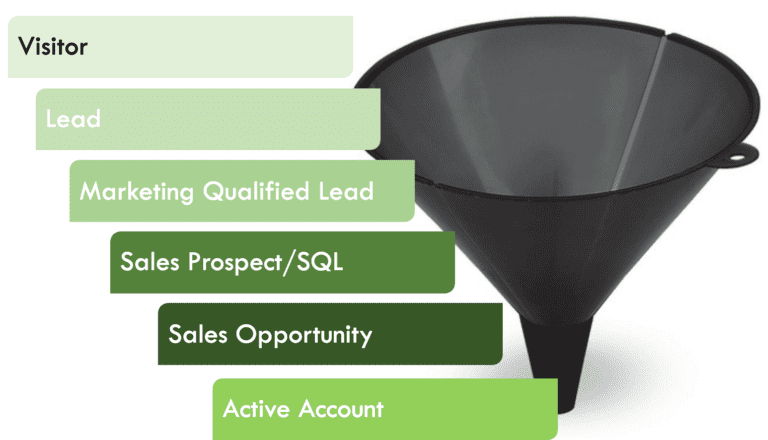
Quick Definitions:
Visitor: Your website visitors arrive on your website from a variety of sources. These include organic search, social media, paid marketing channels like Google Ads, referrals from other websites, or directly by typing in your URL.
Lead: When a person takes a desired action on your website and provides his or her information without making a purchase, you have a new lead (also known as a prospect).
Marketing Qualified Lead (MQL): Simply put, an MQL is a lead that is qualified, or has sales potential, based on the individual’s response to marketing efforts. This can include something as simple as providing an accurate email address, or something more involved like multiple website visits, downloading materials, or using a free trial.
Sales Prospect or Sales Qualified Lead (SQL): Going one step further, an SQL is a lead that has been qualified as being ready to take the next step and become a customer. Sales Qualified Leads have been vetted by both marketing and sales and have demonstrated sufficient interest in further conversation.
Sales Opportunity: This is the big moment – the conversation that is designed to turn your prospect into a customer.
Active Account: Success! Your hard work paid off, and your lead has an active account with your business.
In the following chart, you can see what drives your visitors to continue down the funnel to become customers:
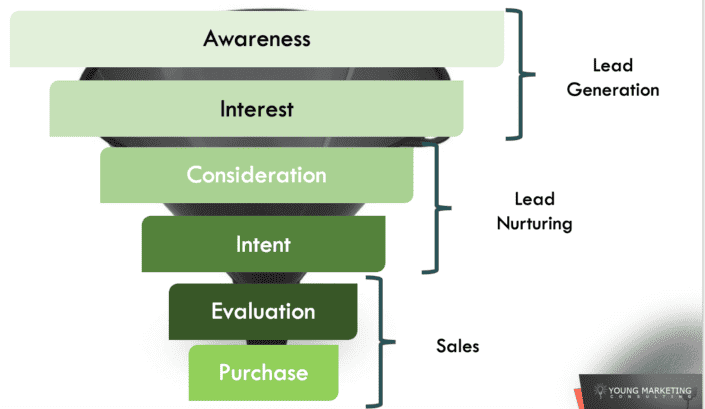
Step Two: Lead Generation
Lead generation can be expensive, so it’s important to understand where your organization can expect to find high-quality leads. The following chart illustrates where the best – and worst – leads are found. Keep in mind, even if a marketing tactic is associated with lower quality leads, it may still offer an affordable way to reach your target audience. The ROI may be worthwhile if the cost is low enough. As always, it takes a lot of testing to evolve a successful marketing strategy.
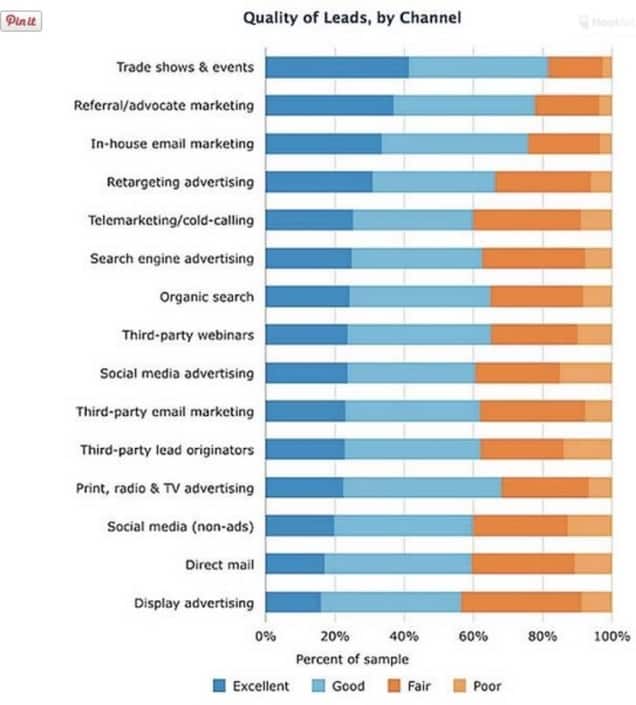
Metrics for Success
When you’re in the process of testing and measuring marketing efforts, it’s important to understand the benchmarks and metrics that will help you determine whether or not a campaign is working.
The average lead-to-opportunity conversion rate across industries is 13%, and the average time to conversion is 84 days. In the tech industry, the average lead costs $60 (and that cost is increasing quickly), while the average cost per lead for non-profits is $43.
Step Three: Qualification
Only 3% of new leads are ready to buy the moment they become a lead.
That means 97% will require more effort on the part of your marketing and sales teams to qualify and then nurture the lead until conversion. Many factors will influence exactly what this process looks like and whether or not you can expect your lead to become an active account.
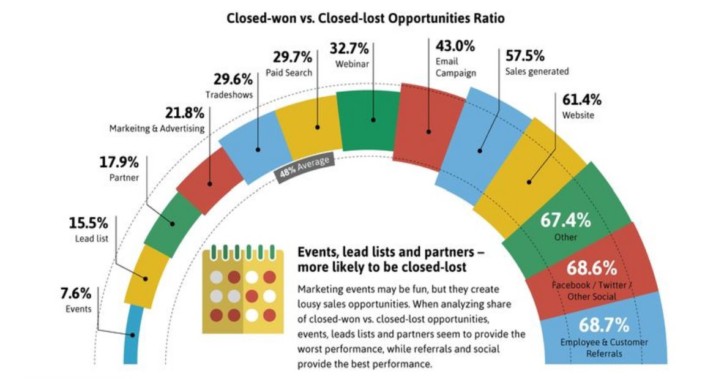
Factors that Influence Lead Qualification
- Number of people involved in decision making: The more people weigh in on a purchase decision, the less likely a lead will convert. While there’s an 81% chance with a single decision-maker, there’s only a 35% chance with a group of six.
- Complexity of the sale: Direct sales have a short sales cycle and few influencers, while complex sales have a long sales cycle and many influencers.
- Response time: The chart below illustrates how dramatically success decreases just five minutes after a lead submits a form on your website.
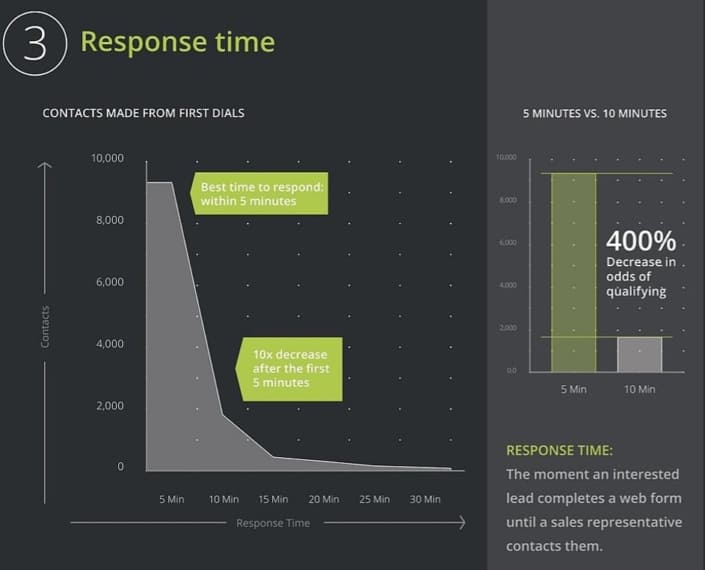
4. Persistence: Sales teams that make multiple calls have much higher success rates. They also have a better chance of making contact on a Wednesday or Thursday as compared to any other weekday.
Sales teams who initiate one phone call have a 35% chance of making contact, but sales teams that call at least six times have a 90% or better chance.
Step Four: Nurturing Your Leads
Once your marketing and sales team has determined that a lead is qualified, it’s time to treat that lead with care until it turns into an active account. Don’t despair if the process takes longer than you anticipated; sometimes we’re surprised by how long the sales cycle can be for even a simple purchase. If the lead has met your qualifications, the right amount and type of nurturing actions can lead to that final conversion. Here are some common conversion rates to help you benchmark your efforts:
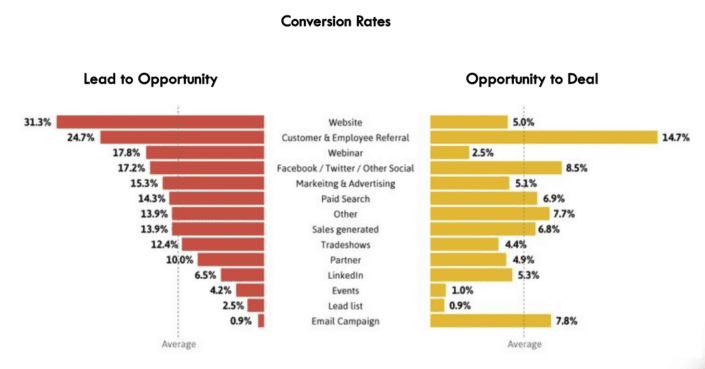
Main Methods for Lead Nurturing
- Social media
- Remarketing
- Sales representatives
Drilling Down on Email Lead Nurturing
Email is going to be the most cost-effective method of nurturing your leads, so it warrants more explanation. Email list segmentation and individualized messaging are the two most effective ways to personalize your messages, but there are numerous other useful options as well.
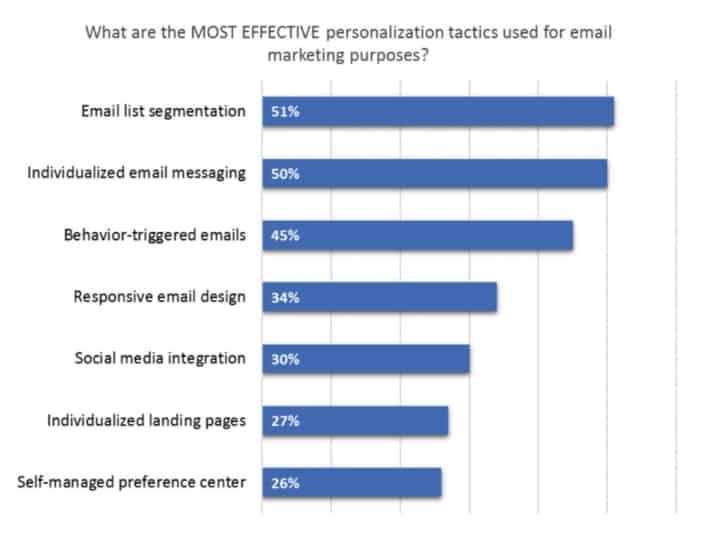
Good hooks to use in your emails include comparison guides, challenges to the status quo, data or surveys, and use cases. When you communicate, let your leads know how your product can solve their problems and make their work easier.
Marketing automation platforms offer a convenient way to nurture your leads on a consistent basis and respond to any actions they take on your website after becoming a qualified lead. There are so many marketing automation platforms to choose from, but some of the most popular include Marketo, ParDot, HubSpot, and Eloqua. All of these programs will allow you to track your leads, send out regular emails, and provide a customized experience to your leads when they visit your website, all things that should eventually turn your leads into active accounts.
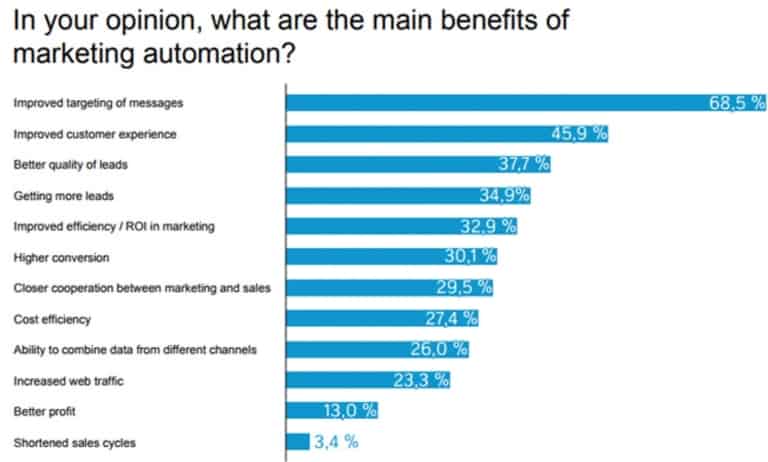
Setting up marketing automation is an involved process, but once you have things in place, it’s easy to add additional email templates and other customizations to test out new strategies or messaging.
Are you ready to conquer your sales funnel in 2021 by implementing the best practices we’ve described above? Send us a message, and we’ll help you get started.
Share this post on your social profile:
A performance-driven marketing strategist with twenty years of experience growing international brands and organizations, Tim Young spent time at the Corporate Executive Board (now Gartner) and the Entrepreneurs' Organization before founding Young Marketing Consulting in 2013.
His areas of expertise include brand growth and identity development; lead generation and conversion; search engine optimization (SEO); customer satisfaction evaluation and improvement; customer segmentation and CRM work; ROI analysis and improvement; market research; and product development.
Want to get our blogs directly to your inbox?
Enter your email to sign up for our point of view on marketing trends, brand strategy, and sustainable business.


